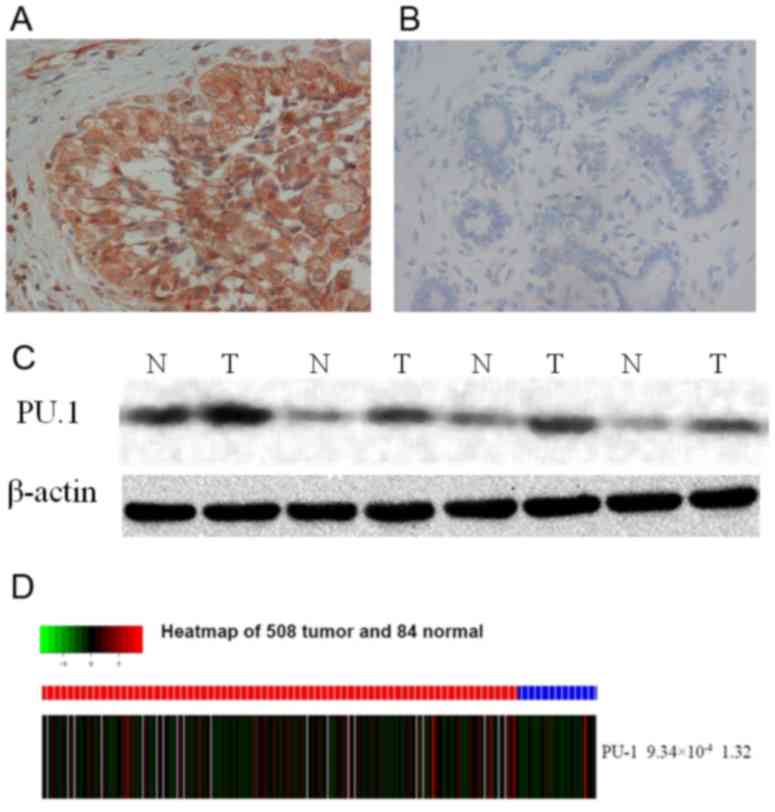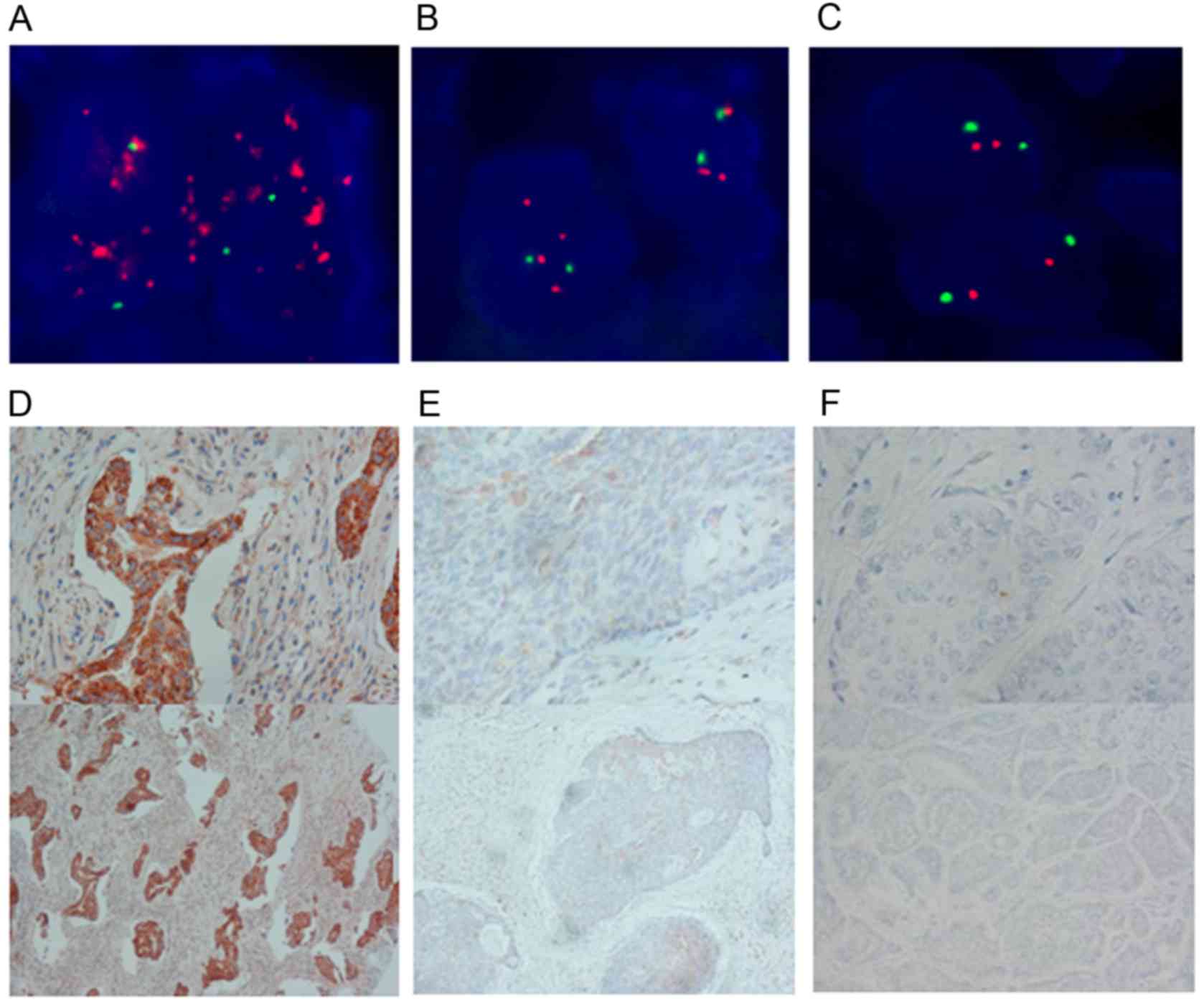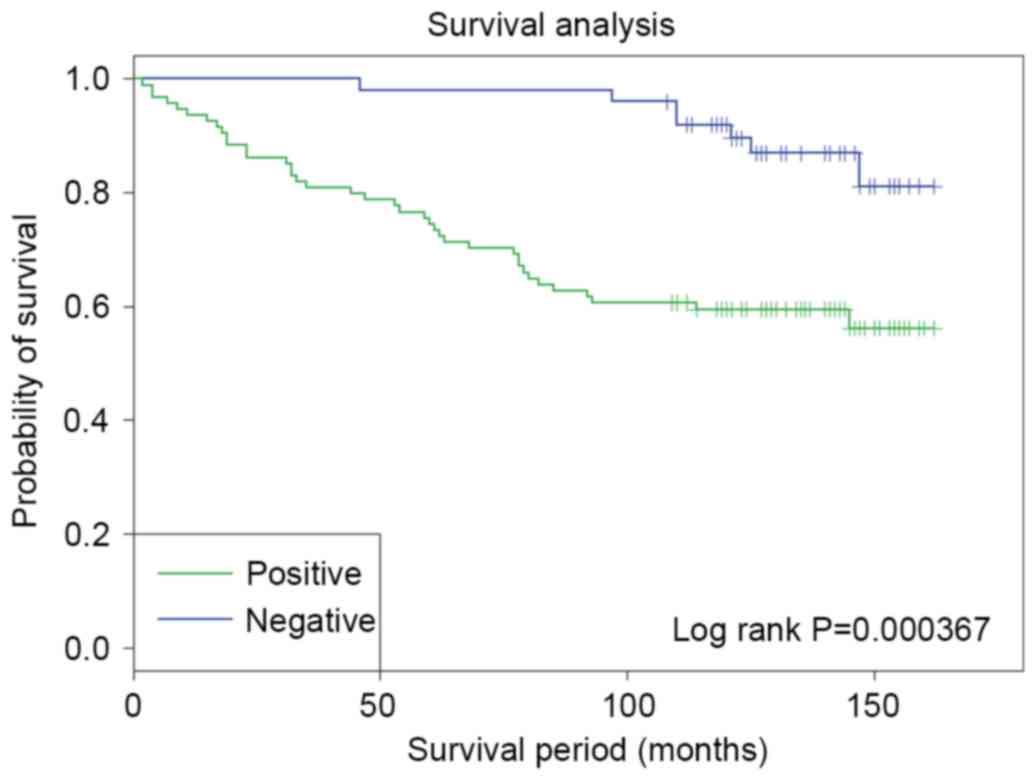|
1
|
Stagl JM, Bouchard LC, Lechner SC,
Blomberg BB, Gudenkauf LM, Jutagir DR, Glück S, Derhagopian RP,
Carver CS and Antoni MH: Long-term psychological benefits of
cognitive-behavioral stress management for women with breast
cancer: 11-year follow-up of a randomized controlled trial. Cancer.
121:1873–1881. 2015. View Article : Google Scholar : PubMed/NCBI
|
|
2
|
DeSantis C, Ma J, Bryan L and Jemal A:
Breast cancer statistics, 2013. CA Cancer J Clin. 64:52–62. 2014.
View Article : Google Scholar : PubMed/NCBI
|
|
3
|
Malladi S, Macalinao DG, Jin X, He L,
Basnet H, Zou Y, de Stanchina E and Massague J: Metastatic latency
and immune evasion through autocrine inhibition of WNT. Cell.
165:45–60. 2016. View Article : Google Scholar : PubMed/NCBI
|
|
4
|
Grivennikov SI, Greten FR and Karin M:
Immunity, inflammation, and cancer. Cell. 140:883–899. 2010.
View Article : Google Scholar : PubMed/NCBI
|
|
5
|
Turkistany SA and DeKoter RP: The
transcription factor PU.1 is a critical regulator of cellular
communication in the immune system. Arch Immunol Ther Exp (Warsz).
59:431–440. 2011. View Article : Google Scholar : PubMed/NCBI
|
|
6
|
Verbiest T, Bouffler S, Nutt SL and Badie
C: PU.1 downregulation in murine radiation-induced acute myeloid
leukaemia (AML): From molecular mechanism to human AML.
Carcinogenesis. 36:413–419. 2015. View Article : Google Scholar : PubMed/NCBI
|
|
7
|
Chen HM, Zhang P, Voso MT, Hohaus S,
Gonzalez DA, Glass CK, Zhang DE and Tenen DG: Neutrophils and
monocytes express high levels of PU.1 (Spi-1) but not Spi-B. Blood.
85:2918–2928. 1995.PubMed/NCBI
|
|
8
|
Cantor AB and Orkin SH: Hematopoietic
development: A balancing act. Curr Opin Genet Dev. 11:513–519.
2001. View Article : Google Scholar : PubMed/NCBI
|
|
9
|
McKercher SR, Torbett BE, Anderson KL,
Henkel GW, Vestal DJ, Baribault H, Klemsz M, Feeney AJ, Wu GE,
Paige CJ, et al: Targeted disruption of the PU.1 gene results in
multiple hematopoietic abnormalities. EMBO J. 15:5647–5658.
1996.PubMed/NCBI
|
|
10
|
Scott EW, Simon MC, Anastasi J and Singh
H: Requirement of transcription factor PU.1 in the development of
multiple hematopoietic lineages. Science. 265:1573–1577. 1994.
View Article : Google Scholar : PubMed/NCBI
|
|
11
|
DeKoter RP and Singh H: Regulation of B
lymphocyte and macrophage development by graded expression of PU.1.
Science. 288:1439–1441. 2000. View Article : Google Scholar : PubMed/NCBI
|
|
12
|
Rosenbauer F, Wagner K, Kutok JL, Iwasaki
H, Le Beau MM, Okuno Y, Akashi K, Fiering S and Tenen DG: Acute
myeloid leukemia induced by graded reduction of a lineage-specific
transcription factor, PU.1. Nat Genet. 36:624–630. 2004. View Article : Google Scholar : PubMed/NCBI
|
|
13
|
Yuki H, Ueno S, Tatetsu H, Niiro H, Iino
T, Endo S, Kawano Y, Komohara Y, Takeya M, Hata H, et al: PU.1 is a
potent tumor suppressor in classical Hodgkin lymphoma cells. Blood.
121:962–970. 2013. View Article : Google Scholar : PubMed/NCBI
|
|
14
|
Will B, Vogler TO, Narayanagari S,
Bartholdy B, Todorova TI, da Silva Ferreira M, Chen J, Yu Y, Mayer
J, Barreyro L, et al: Minimal PU.1 reduction induces a preleukemic
state and promotes development of acute myeloid leukemia. Nat Med.
21:1172–1181. 2015. View
Article : Google Scholar : PubMed/NCBI
|
|
15
|
Tschan MP, Reddy VA, Ress A, Arvidsson G,
Fey MF and Torbett BE: PU.1 binding to the p53 family of tumor
suppressors impairs their transcriptional activity. Oncogene.
27:3489–3493. 2008. View Article : Google Scholar : PubMed/NCBI
|
|
16
|
Hammond ME, Hayes DF, Dowsett M, Allred
DC, Hagerty KL, Badve S, Fitzgibbons PL, Francis G, Goldstein NS,
Hayes M, et al: American society of clinical oncology/college of
American pathologists guideline recommendations for
immunohistochemical testing of estrogen and progesterone receptors
in breast cancer. J Clin Oncol. 28:2784–2795. 2010. View Article : Google Scholar : PubMed/NCBI
|
|
17
|
Wolff AC, Hammond ME, Hicks DG, Dowsett M,
McShane LM, Allison KH, Allred DC, Bartlett JM, Bilous M,
Fitzgibbons P, et al: Recommendations for human epidermal growth
factor receptor 2 testing in breast cancer: American society of
clinical oncology/college of American pathologists clinical
practice guideline update. Arch Pathol Lab Med. 138:241–256. 2014.
View Article : Google Scholar : PubMed/NCBI
|
|
18
|
Yerushalmi R, Woods R, Ravdin PM, Hayes MM
and Gelmon KA: Ki67 in breast cancer: Prognostic and predictive
potential. Lancet Oncol. 11:174–183. 2010. View Article : Google Scholar : PubMed/NCBI
|
|
19
|
Gonzalez-Sistal A, Baltasar-Sanchez A,
Menendez P, Arias JI and Ruibal A: Breastfeeding and
immunohistochemical expression of ki-67, p53 and BCL2 in
infiltrating lobular breast carcinoma. PloS One. 11:e01510932016.
View Article : Google Scholar : PubMed/NCBI
|
|
20
|
Agboola AO, Banjo AA, Anunobi CC, Salami
B, Agboola MD, Musa AA, Nolan CC, Rakha EA, Ellis IO and Green AR:
Cell proliferation (KI-67) expression is associated with poorer
prognosis in Nigerian compared to British breast cancer women. ISRN
Oncol. 2013:6750512013.PubMed/NCBI
|
|
21
|
Edge SB and Compton CC: The American joint
committee on cancer: The 7th edition of the AJCC cancer staging
manual and the future of TNM. Ann Surg Oncol. 17:1471–1474. 2010.
View Article : Google Scholar : PubMed/NCBI
|
|
22
|
Cattoretti G, Shaknovich R, Smith PM, Jack
HM, Murty VV and Alobeid B: Stages of germinal center transit are
defined by B cell transcription factor coexpression and relative
abundance. J Immunol. 177:6930–6939. 2006. View Article : Google Scholar : PubMed/NCBI
|
|
23
|
Hoefnagel JJ, Mulder MM, Dreef E, Jansen
PM, Pals ST, Meijer CJ, Willemze R and Vermeer MH: Expression of
B-cell transcription factors in primary cutaneous B-cell lymphoma.
Mod Pathol. 19:1270–1276. 2006. View Article : Google Scholar : PubMed/NCBI
|
|
24
|
Wolff AC, Hammond ME, Hicks DG, Dowsett M,
McShane LM, Allison KH, Allred DC, Bartlett JM, Bilous M,
Fitzgibbons P, et al: Recommendations for human epidermal growth
factor receptor 2 testing in breast cancer: American society of
clinical oncology/college of American pathologists clinical
practice guideline update. J Clin Oncol. 31:3997–4013. 2013.
View Article : Google Scholar : PubMed/NCBI
|
|
25
|
Cole SW: Chronic inflammation and breast
cancer recurrence. J Clin Oncol. 27:3418–3419. 2009. View Article : Google Scholar : PubMed/NCBI
|
|
26
|
Chang HC, Sehra S, Goswami R, Yao W, Yu Q,
Stritesky GL, Jabeen R, McKinley C, Ahyi AN, Han L, et al: The
transcription factor PU.1 is required for the development of
IL-9-producing T cells and allergic inflammation. Nat Immunol.
11:527–534. 2010. View
Article : Google Scholar : PubMed/NCBI
|
|
27
|
Kueh HY, Champhekar A, Nutt SL, Elowitz MB
and Rothenberg EV: Positive feedback between PU.1 and the cell
cycle controls myeloid differentiation. Science. 341:670–673. 2013.
View Article : Google Scholar : PubMed/NCBI
|
|
28
|
Zhou J, Zhang X, Wang Y and Guan Y: PU.1
affects proliferation of the human acute myeloid leukemia U937 cell
line by directly regulating MEIS1. Oncol Lett. 10:1912–1918.
2015.PubMed/NCBI
|
|
29
|
Chou S, Khan T, Mahajan H and Pathmanathan
N: Predicting discordant HER2 results in ipsilateral synchronous
invasive breast carcinomas: Experience from a single institution.
Pathology. 47:637–640. 2015. View Article : Google Scholar : PubMed/NCBI
|
|
30
|
Yarden Y: Biology of HER2 and its
importance in breast cancer. Oncology. 61 Suppl 2:S1–S13. 2001.
View Article : Google Scholar
|

















